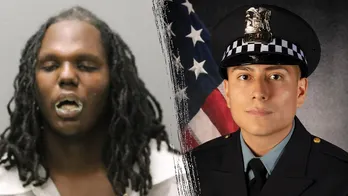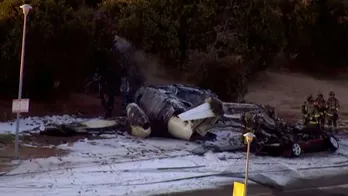When Black boaters faced discrimination on the water, this yacht club became a refuge
ANNAPOLIS, Maryland — David Turner, whose father and grandfather worked the Chesapeake Bay as crabbers and oystermen, recalls "getting up at the crack of dawn" as a kid to help out on weekends and summers.
"I hated it," he says. Turner's childhood experience on Kent Island left him wanting "nothing to do with the water."
"That's why I went to college," he says.
He also remembers his father and grandfather's stories of racial discrimination they encountered on the bay. "They couldn't get parts," he says. "They couldn't get fuel."
Turner's dislike for the water eventually faded. In fact, as he got older, he found that the Chesapeake Bay was "in my bloodstream." He bought a boat. Then another. Eventually, in 2007, he joined the Seafarers Yacht Club of Annapolis.
The historically Black group of like-minded boaters is what drew him in. "I found a group of people who were serious about boating, serious about the community," he says. "They weren't worried about what they did for a living every day. They were interested in boating and the broader community."
A safe haven for Black boaters
If not for the nautical flagpole out front and the placard next to the entrance, the headquarters of the club, founded in 1959 by a handful of Black boaters, would blend seamlessly into the surrounding houses in the city's Eastport district. In many ways, it's a reflection of the area's history and how attitudes have evolved over time. The Maryland capital was once an infamous slave port, and until the early 1960s, the club's headquarters served as a segregated school for "colored children."
In and around Annapolis at that time, some fuel docks refused to serve Black boat owners, says SYC Commodore Benny McCottry.
"They would have to be creative and say, 'I'm here to get gas for the the boss' or something of that nature," he says. "So people would assume this boat didn't belong to them."
Today, the SYC is one of several yacht clubs started by Black boat owners that still dot the Chesapeake and its tributaries. It is equal parts boating organization, social club and community center. Despite the COVID-19 pandemic, the Seafarers have continued to flourish, now boasting about 80 members.
A space for children to learn about the water
On a recent Friday inside the SYC's headquarters, about 40 children wearing matching yellow-and-blue shirts fidget in their seats as they gather for the final day of a two-week youth program. The popular summer curriculum aims to teach an eclectic variety of life skills — from boat handling and fishing to physical fitness.
But on this day, swimming and chess are at the top of the list. The children had been anticipating a cruise on the Chesapeake Bay, but the weather wasn't cooperating.
"Just like in chess, we need to adjust our plan," Vice Commodore Derrick Cogburn announces to the seated kids. Plan B is to watch Queen of Katwe, a film about Phiona Mutesi, a Ugandan girl who rises out of the slums of Kampala to become an international chess star.
Chess, Cogburn tells the children, can help them learn discipline, abstract thinking and how to be flexible about strategy.
The club has its own pool and McCottry, 72, a former Red Cross water safety instructor, rattles off some sobering statistics that illustrate why swimming is a focus: African Americans are 1.5 times more likely to drown than their white counterparts.
According to club member Alice Mahan, who is coordinator for the summer program, "Most of these kids, when they came, did not even want to get their faces wet."
One of them is 10-year-old Olivia Oliver. Entering the program two weeks ago, she did not know how to swim. Now, she says she's mostly confident in the water, but still a little nervous on the deep end. For her, the best part of the program was kayaking. "It was super fun and interesting to see all the jellyfish in the water," she says.
The SYC also hosts Annapolis' only Sea Scout ship as part of the Boy Scouts of America-affiliated program. Some of its top Scouts have gone on to the U.S. Naval and Coast Guard academies.
Confidence and camaraderie
Lonnie Alsop, 69, who joined the club just a few months ago, says he's known about the Seafarers since he was a boy. "My father had friends who were members," he says. "My dad was not a boat owner. I was always hoping he would be, but that never happened."
Alsop says he's always had a love of water. "I bought my first boat when I was 16 years old, which was a speed boat," he says. "I went from there to larger and larger boats. And so finally I got involved in cigarette-style boats, and I had those for years."
"I always wanted to be a Seafarer, but my life has been so busy that I didn't think I had time to be totally involved in and do the types of things in the community that they are constantly involved in."
He says he's "looking forward to spending more time with them and getting involved in some of the programs that they're carrying on in the community."
The days of being turned away at fuel docks are long gone. Many places on the bay are very welcoming, Alsop says. But even now, he says he's "not super comfortable going to marinas where I'm not really familiar."
"To be honest with you, having the camaraderie of some of the guys who are of my same race makes [me] a little more confident," he says.
Disclaimer: The copyright of this article belongs to the original author. Reposting this article is solely for the purpose of information dissemination and does not constitute any investment advice. If there is any infringement, please contact us immediately. We will make corrections or deletions as necessary. Thank you.







